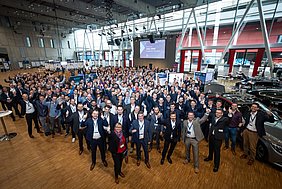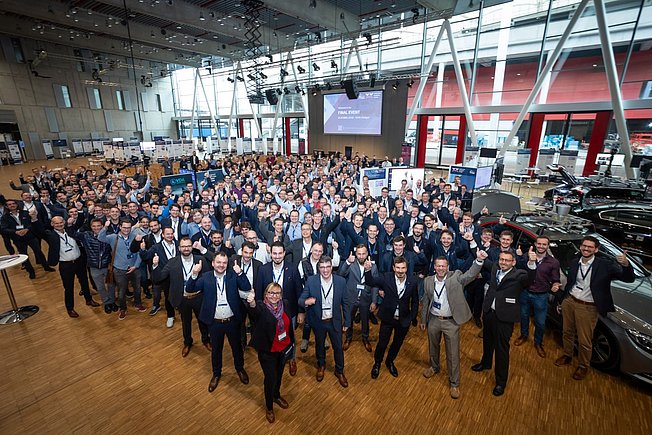Final presentation and intensive expert discussions in Stuttgart
In the joint project Verification and Validation Methods (VVM), 21 partners from the German automotive industry have come together to develop the world's first structures for the verification of safety standards for automated vehicles in urban environments. Four years after the start of the research project, the results are now available. The pre-competitive research project, funded by the German Federal Ministry for Economic Affairs and Climate Action and initiated by the VDA flagship initiative for autonomous and connected driving, provided detailed insights into the findings and work results during the final presentation on November 21 and 22, 2023.
For the dialogue at the Carl-Benz Arena in Stuttgart, over 300 participants gathered on each of the two days, with more than 600 individuals also tuning into the live stream on both days. The first day focused on the project overview. Keynote speeches by George Massing, Vice President of Automated Driving, Vehicle Networking & Integration at Mercedes-Benz, and Michael Kram, CTO Automated Driving at Bosch, highlighted the significance of the project for the development in the involved organizations. International guests and speakers from the USA, Japan, and the EU underlined the importance of the VVM project. The event began with a live address from Ernst Stöckl-Pukall from the German Federal Ministry for Economic Affairs and Climate Action as the funding provider. Throughout the day, participants gained a detailed understanding of the VVM overall method through presentations and expert discussions in the exhibition.
On the following day, participants delved deeper into core topics of the VVM project in three sessions. The first session focused on "The VVM safety case approach and process view," led by the overall project leader and coordinator Roland Galbas of Bosch. The second session, moderated by Marcus Nolte of TU Braunschweig, addressed "The argumentation of safety and its role in the applied safety case." The third session, led by Ulrich Eberle of Stellantis, was titled "The role of ODD in the safety case."
It became evident over the two days that the higher the level of automated driving and the more complex a system’s area of application, such as in urban traffic, the more factors need to be taken into account during development. This explains the need for suitable verification and validation methods, which was the focus of the VVM project’s efforts.
Approval for road use requires verifiable safety
Right from the very beginning of the design and development of automated driving functions, safety is the overriding consideration. And safety functions must be verified before a vehicle can be approved and certified for use in road traffic. To be able to provide this verification, the 21 project partners have jointly developed a model comprising a suite of procedures, methods, and tools. This allows a “security argumentation” to be employed to verify that the system is safe to use. To develop the methodology for this model, the partners worked together in several subprojects. If it were applied industry-wide, the defined model would provide the basis for verifying the safety of automated vehicles.
Technological pioneer from Germany
The VVM project’s methodological approach is the world’s first standard to also take industrial processes into account, once again underscoring the German automotive industry’s pioneering role in automated driving. At the end of its project term, and building on the results of its Pegasus and SetLevel predecessor projects, VVM now delivers the world’s first consistent methodical approach to safety for automated driving in an urban environment, enabling industry-wide collaboration and value creation. The scenario-based safety verification approach pursued in the project could help to set global standards once it has been approved by the authorities. VVM has created a reference system for the industry that is relevant for the future, closes a methodological gap for practical validation, and secures the pioneering role of German industry in international competition on automated driving.

